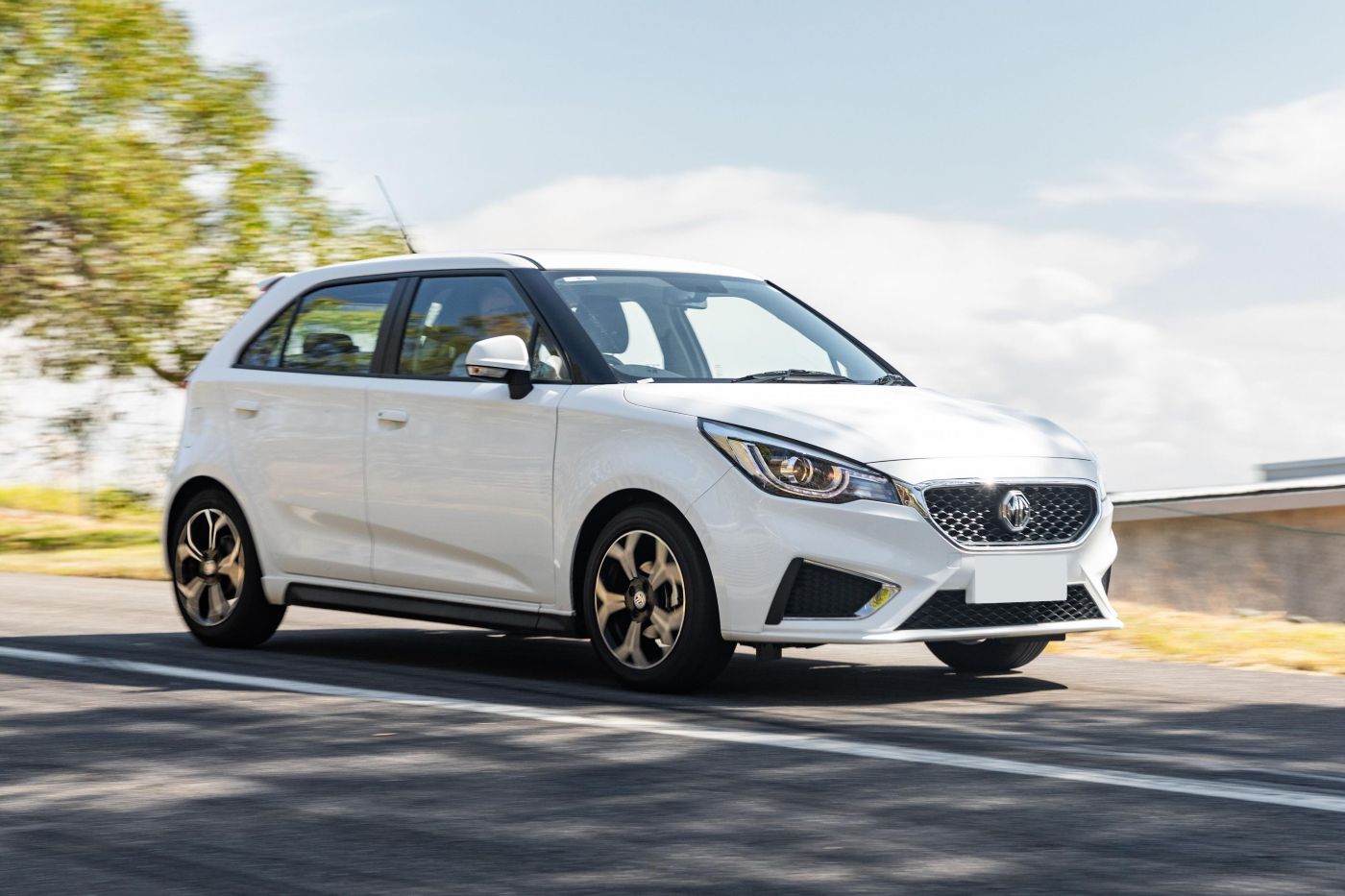Everyone appreciates the idea of excellent fuel economy, but many of the most efficient vehicles in the auto industry rely on expensive technologies such as hybrid or electric powertrains. Fortunately, there’s a way to save money while still benefiting from great gas mileage by purchasing a used fuel-efficient car.
In this article, we’ve compiled a list of 10 used cars from the 2018 model year that achieve 40 mpg or more. These vehicles include hybrids and electric cars, as well as a few models with economical gasoline engines.
The list features a range of options, from small, easy-to-drive hatchbacks to family-friendly mid-size cars, and even a couple of luxury models that offer impressive fuel efficiency.
2018 Mitsubishi Mirage
The 2018 Mitsubishi Mirage is the most fuel-efficient gas-only car available in recent years. With its modest 78-horsepower 1.2-liter three-cylinder engine and continuously variable automatic transmission, the Mirage achieves an EPA-estimated 37 mpg in the city and 43 mpg on the highway.
This small subcompact hatchback is a great option for those looking to maximize fuel savings without the complexity of a hybrid or electric vehicle.
The 2024 Mitsubishi Mirage, despite what its name might imply, is no illusion. It’s very real—and it stands as one of the last remaining subcompact hatchbacks on the market.
Its sedan counterpart, the Mirage G4, is reviewed separately. With a base price under $20,000, the Mirage ranks among the most affordable new cars available today.

Even the entry-level version comes decently equipped, offering a surprising array of standard features. These include automatic climate control, forward collision warning with automatic emergency braking, and a touchscreen infotainment system that supports both Apple CarPlay and Android Auto.
However, once you get past the spec sheet, the Mirage starts to fall apart—figuratively, if not literally. It’s underpowered, with sluggish acceleration that makes highway merging a chore.
Comfort isn’t its strong suit either, and the interior quality leaves a lot to be desired. Plastics feel flimsy, and the overall fit and finish don’t instill confidence, resembling something more akin to a novelty watch from a discount jeweler than a thoughtfully engineered vehicle.
In essence, the Mirage lures in budget-conscious buyers like a shimmering oasis to a parched traveler—promising value and practicality, only to disappoint when examined up close.
While it may appear to be a smart buy at first glance, the Mirage’s shortcomings in performance, refinement, and overall driving experience reveal that it’s not quite the bargain it initially seems to be.
2018 Honda Civic
The 2018 Honda Civic, available as a sedan, coupe, or hatchback, achieves at least 40 mpg on the highway, making it a solid option for fuel efficiency.
The most economical version, a sedan with a 1.5-liter turbocharged four-cylinder engine, provides 32 mpg in the city, though it excels on the highway. The Civic also stands out for its well-rounded performance, reliability, and versatility.
It’s difficult to overstate our appreciation for the 2018 Honda Civic. When equipped with the turbocharged 1.5-liter four-cylinder engine, the Civic stands out as one of the most well-rounded vehicles in its segment, offering an exceptional blend of strong acceleration and impressive fuel efficiency.
Inside the cabin, the Civic provides ample passenger space, thoughtful storage options, and more cargo capacity than many of its competitors across all available body styles. Technologically, it delivers features that put several other compact cars to shame, and its safety ratings rank among the best in the class.
Available in sedan, coupe, and hatchback configurations, and offering multiple powertrains, the Civic lineup ensures there’s a version tailored for virtually every driver’s needs—and each variant maintains a high level of quality.
For those looking for extra performance, the Civic Si turns up the excitement, while the wild Civic Type R offers an exhilarating driving experience. Remarkably, neither of these sportier versions sacrifices the practicality and refinement that make the standard Civic models so appealing.
That said, the Civic isn’t perfect. Its infotainment system can be frustrating to operate due to an unintuitive interface, and the available forward collision warning system sometimes reacts too aggressively.
Additionally, while cargo space is generally strong, the sedan’s trunk design and the hatchback’s sloping rear glass can make it challenging to load taller or bulkier items.
There are certainly rivals worth considering, especially those with specific advantages. The Mazda 3 stands out for its engaging driving dynamics and near-luxury interior in higher trims.
The Subaru Impreza offers standard all-wheel drive, a rarity in this class, and the Kia Forte delivers strong overall value. Nonetheless, the Civic earns its place at the top thanks to its comprehensive strengths.
It’s worth noting that the 2018 Honda Civic Si was selected as one of Edmunds’ Best Sport Sedans of the year, further solidifying the model’s broad appeal.

When it comes to daily living, the Civic continues to impress. Though the nameplate has long been associated with reliability and efficiency, the redesign launched for the 2016 model year marked a significant turning point.
It elevated the Civic into a new league, redefining expectations for compact cars. This generation is celebrated for its roomy interior, smooth ride, high-quality materials, and precise handling.
The turbocharged engine provides a compelling mix of power and efficiency that won us over to the point where we purchased a top-tier Touring sedan for our long-term test fleet. While that vehicle was a 2016 model, all of our key impressions remain fully applicable to the 2018 version.
Also Read: Top 10 Budget-Friendly & Luxury Trucks You Can Buy
2018 Toyota Camry Hybrid
For those seeking a larger vehicle, the 2018 Toyota Camry Hybrid is an excellent choice. While the base four-cylinder Camry offers nearly 40 mpg on the highway, the Camry Hybrid is even more fuel-efficient, with EPA ratings of up to 51 mpg in the city and 53 mpg on the highway in its base LE trim.
The rest of the Camry Hybrid lineup delivers 44 mpg city and 47 mpg highway, making it a top pick for fuel-conscious buyers.
The 2018 Toyota Camry Hybrid arrives with a full redesign, bringing a series of notable improvements that push it to the forefront of the midsize hybrid sedan class. Among its standout enhancements are better fuel efficiency, more attractive styling, and a broader list of standard safety technologies.
Fuel economy remains the primary appeal of any hybrid sedan, and the 2018 Camry Hybrid delivers more than ever before. All trims are powered by an updated 2.5-liter four-cylinder engine paired with an electric motor, resulting in gains in both fuel efficiency and horsepower.
The base LE trim is especially impressive, boasting an EPA-estimated 52 mpg combined—matching the efficiency of Toyota’s smaller Prius and marking a 12 mpg improvement over the previous year. Meanwhile, the SE and XLE trims, though slightly less efficient, still achieve a strong 46 mpg combined rating.
Beyond its powertrain, the new Camry Hybrid also benefits from sleeker exterior styling that gives it a more modern and upscale presence on the road. Inside, the cabin features upgraded technology, including a refreshed 7-inch touchscreen running the latest version of Toyota’s Entune interface.
Perhaps even more significant are the newly standard advanced driver aids such as adaptive cruise control and forward collision mitigation, which bolster the Camry Hybrid’s appeal from a safety standpoint.
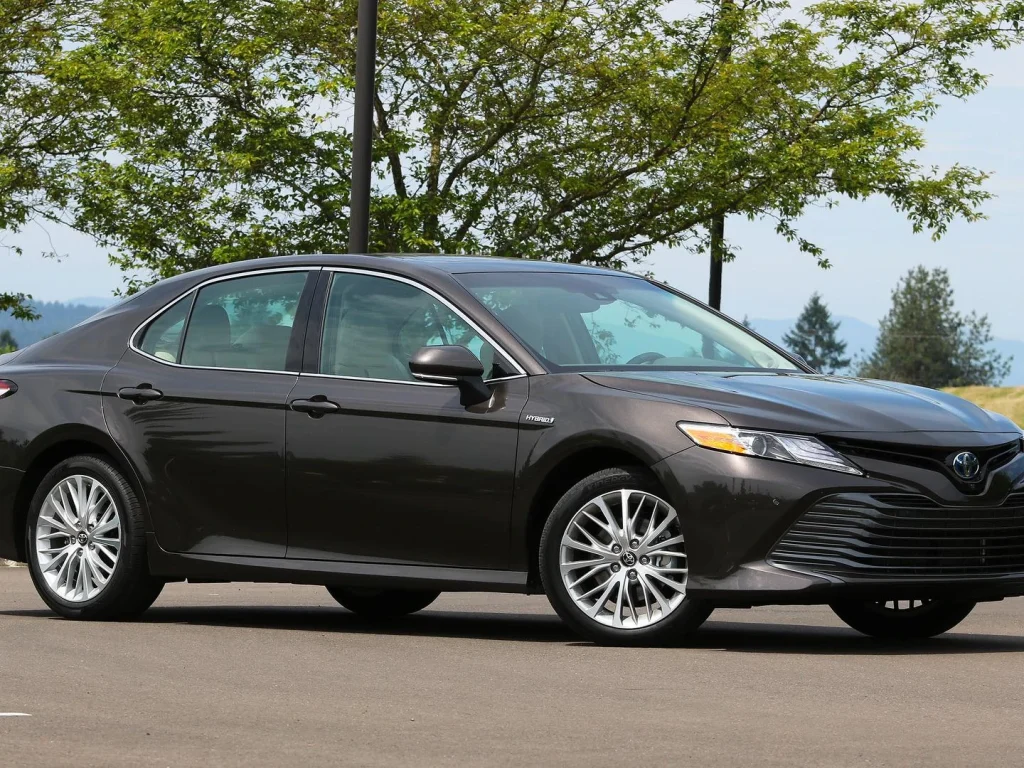
Underneath it all, the 2018 model features a redesigned suspension setup that greatly enhances ride quality, especially over rough or uneven pavement—an important benefit for drivers navigating urban environments. These changes make the Camry Hybrid not only more refined but also more practical for everyday commuting.
While the Entune infotainment system still has some usability quirks, and a few aspects of drivability could be further polished, the 2018 Toyota Camry Hybrid represents a substantial upgrade over the previous model.
With its blend of efficiency, comfort, and standard features, it stands out as a strong choice in its segment. We recommend taking it for a test drive to fully appreciate the improvements firsthand.
2018 Lincoln MKZ Hybrid
The 2018 Lincoln MKZ Hybrid is a luxury alternative that blends style with efficiency. Based on the Ford Fusion Hybrid, the MKZ Hybrid offers a refined and quiet ride with a high level of amenities.
It achieves an EPA-estimated 41 mpg in the city and 38 mpg on the highway, making it an appealing choice for those looking for a luxurious, fuel-efficient sedan.
The Lincoln MKZ is a mid-size luxury sedan that focuses on delivering generous interior space and a smooth, comfortable ride, rather than emphasizing sharp handling or a state-of-the-art cabin.
When stacked up against competitors such as the Lexus ES, Cadillac CTS, Volvo S90, and Audi A6, the MKZ can sometimes come across as lacking in the refinement expected from a top-tier luxury offering.
However, the overall appeal of the MKZ varies significantly depending on the chosen powertrain and how far up the trim ladder a buyer is willing to go.
For the 2018 model year, the MKZ sees only minimal updates. Originally launched in 2013 and refreshed extensively in 2017 with a design overhaul inspired by the larger Lincoln Continental, the 2018 MKZ receives only a few new exterior color options and minor adjustments to available feature packages.
Pricing for the 2018 MKZ originally ranged from $36,530 for the base Premiere trim, $39,425 for the Select, $41,095 for the Reserve, and up to $48,915 for the top-tier Black Label.
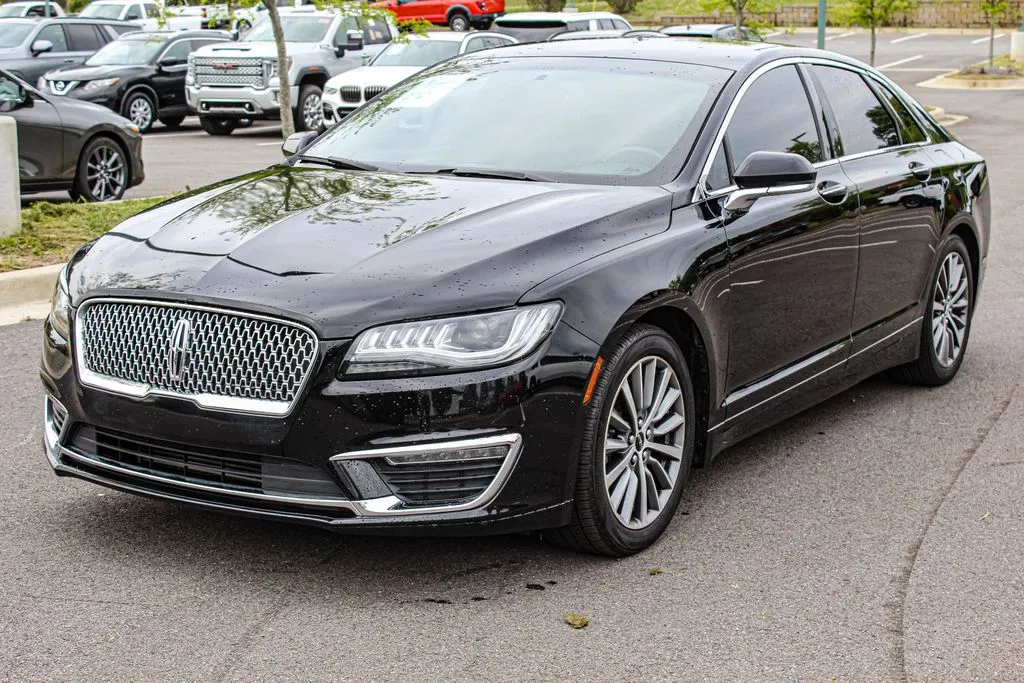
Under the hood, the MKZ offers multiple engine choices, including a fuel-efficient hybrid variant. The standard setup features a 245-hp turbocharged 2.0-liter four-cylinder engine, paired with a six-speed automatic transmission and front-wheel drive.
This powertrain is well-suited to buyers who prioritize luxury branding over sporty performance, though it remains a reasonably quick and efficient option. All-wheel drive is also available for those seeking extra traction.
Stepping up to the twin-turbocharged 3.0-liter V6 changes the character of the MKZ significantly. This engine produces 350 horsepower with front-wheel drive and jumps to 400 horsepower when paired with all-wheel drive. The additional traction makes a noticeable difference, as the potent engine can easily overwhelm the front wheels during aggressive acceleration.
For those leaning toward efficiency, the MKZ Hybrid combines a 2.0-liter four-cylinder engine with an electric motor, delivering a total of 188 horsepower to the front wheels via a continuously variable automatic transmission (CVT).
While the hybrid setup provides impressive fuel economy, it comes at the expense of driving excitement—the MKZ Hybrid is far from engaging behind the wheel and best suited for drivers who don’t mind a more relaxed pace.
Also Read: Top 10 Worst and 10 Best Trucks for Towing
2018 Ford C-Max
Another great option for families is the 2018 Ford C-Max. This small yet spacious wagon provides generous passenger and cargo space while maintaining excellent fuel economy.
As the final year for the C-Max, every 2018 model is a conventional hybrid, with EPA ratings of 42 mpg city and 38 mpg highway, making it an affordable choice for those in need of a practical, fuel-efficient family car.
Ford discontinued the C-Max Energi plug-in model, leaving the C-Max Hybrid as the final version of this model for its last year.
The C-Max serves as Ford’s only hatchback hybrid, alongside the Fusion Hybrid, which is the automaker’s other hybrid offering.
2018 C-Max SE: The base trim includes 17-inch aluminum wheels, a Sync infotainment system with USB and auxiliary ports, LED daytime running lights, active grille shutters, dual-zone automatic climate control, a leather-wrapped steering wheel, a 110-volt outlet, and a 10-way power adjustable driver’s seat.
2018 C-Max Titanium: The top-tier Titanium trim enhances the SE with 17-inch aluminum wheels with painted pockets, power and heated exterior mirrors, fog lights, a chrome grille, rear parking sensors, rain-sensing wipers, leather-trimmed seats, heated front seats, push-start ignition,
remote engine start, Sync 3 with hybrid-specific content and an 8.0-inch touchscreen, a nine-speaker Sony audio system with HD radio, a 10-way power adjustable passenger seat, and an auto-dimming rearview mirror. Notable extras include a panoramic fixed glass roof and a motion-activated power liftgate.
The 2018 Ford C-Max is powered by an electrified 2.0-liter I-4 engine paired with an electric motor, producing a combined output of 188 hp.
This setup provides an EPA rating of 42 mpg in the city and 38 mpg on the highway, offering a total driving range of 540 miles, based on the EPA’s standard split of 55 percent city driving and 45 percent highway driving.
Power is routed to the front wheels through a continuously variable transmission (CVT). In Motor Trend’s testing, the 2013 C-Max Hybrid achieved 60 mph in 8.1 seconds and stopped from 60 mph in 128 feet.
The 2018 Ford C-Max earned four out of five stars for its overall safety rating. In IIHS testing, the C-Max received an “Acceptable” rating in the driver-side small overlap front crash test, and the highest “Good” rating in four other crash tests. The front crash prevention test was not conducted since the C-Max lacks an automatic emergency braking system.
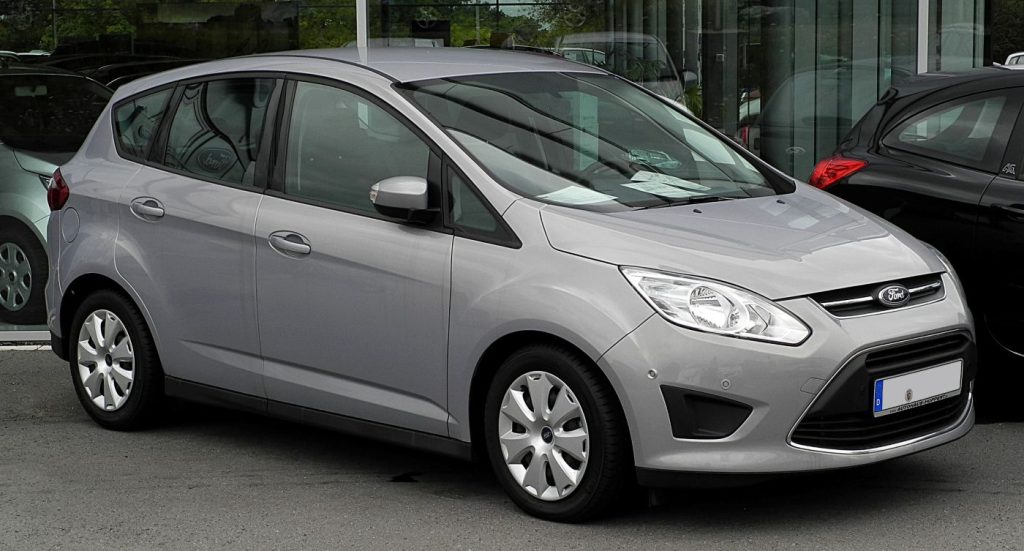
The Titanium Driver Assist package includes a blind-spot monitoring system with rear-cross traffic alert, front parking sensors, and a self-parking system. A rearview camera and an SOS post-crash alert system are standard features.
The 2018 C-Max offers 24.5 cubic feet of cargo space behind the rear seats, expanding to 52.6 cubic feet with the rear seats folded down.
For comparison, the Kia Niro hybrid offers 19.4 cubic feet of cargo space behind its rear seats and 54.5 cubic feet when those seats are folded. The C-Max provides 43.1 inches of legroom for front-seat passengers, while rear-seat passengers get 36.5 inches of legroom.
The C-Max comes standard with the Sync infotainment system, which includes USB and auxiliary ports, along with a 110-volt power outlet for devices.
The upgraded Sync 3 system, displayed on an 8.0-inch touchscreen, offers optional features such as SiriusXM satellite radio and a navigation system. A six-speaker audio system is standard, with an available nine-speaker Sony sound system that includes HD radio. Additional options include a self-parking system and remote engine start.
Cars That Don’t Deliver Advertised MPG
The latest findings from the Australian Automotive Association’s (AAA) Real-World Testing Program have raised some eyebrows in the fuel economy sector. The results reveal significant discrepancies between the fuel efficiency figures achieved in controlled lab conditions and those experienced on actual roads.
2021 BMW X3
The 2021 BMW X3 was the worst performer in the test, consuming 20% more fuel than anticipated. While the lab test rated it at 7.4 L/100 km (31.7 MPG), the real-world test revealed a consumption of 8.9 L/100 km (26.4 MPG). Despite this drop, the BMW X3 remains a popular choice for those seeking a premium compact SUV with strong driving dynamics and versatile features.
Despite being classified as an SUV, the 2021 BMW X3 delivers a surprisingly engaging driving experience—an attribute long associated with BMW’s iconic sports sedans.
It offers a trio of powertrains that all provide strong performance, with the highlight being the M40i model. Powered by a muscular turbocharged 3.0-liter inline-six engine, the M40i earned an Editors’ Choice award thanks to its thrilling acceleration and overall driving dynamics.
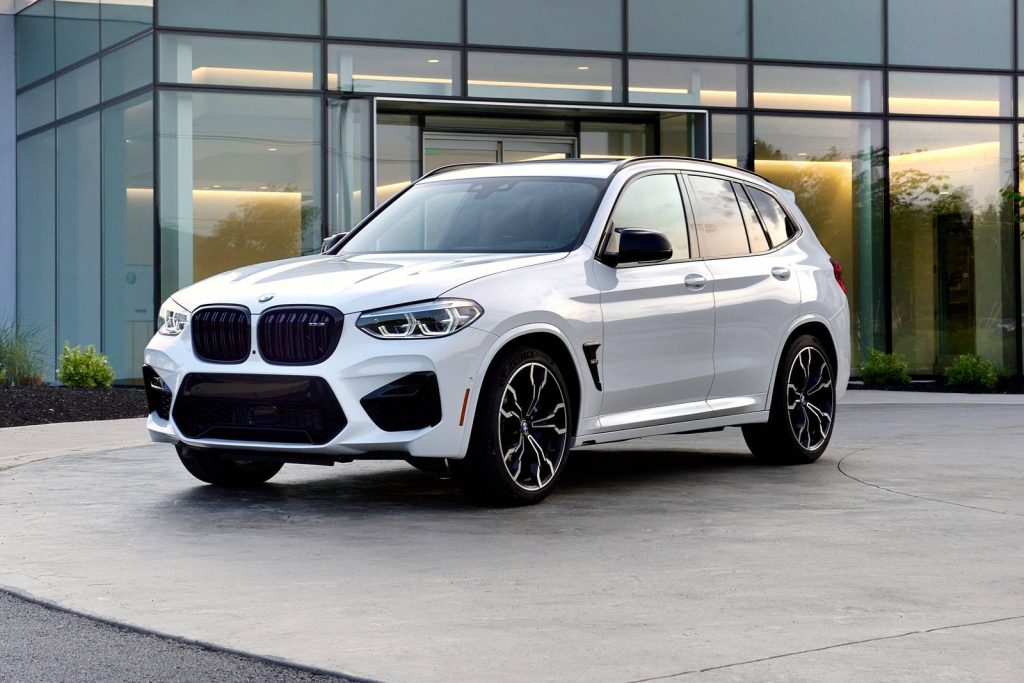
While competitors like the Mercedes-Benz GLC-Class and the Volvo XC60 boast more visually striking interior designs, the X3 impresses with a well-crafted yet understated cabin. It offers generous room for adults in both the front and rear seats, maintaining a balance of comfort and practicality.
Technological amenities are plentiful in the X3, making it a well-connected choice for modern drivers. Behind the rear seats, which conveniently fold flat, there’s a spacious cargo area capable of accommodating everything from luggage and groceries to home improvement supplies—exactly what’s expected from a utility vehicle.
In the 2021 rankings for Best Compact Luxury SUVs, the BMW X3 claims the #2 spot, right behind the Porsche Macan. It stands ahead of rivals like the Volvo XC60 and Mercedes-Benz GLC-Class, reflecting its all-around excellence in performance, utility, and refinement.
For 2021, BMW introduced a few key updates across the X3 lineup. Android Auto smartphone integration and SiriusXM satellite radio are now standard features.
Additionally, every model includes the Active Driving Assistant package, which provides important driver aids like lane-departure warning and blind-spot monitoring. The plug-in hybrid xDrive30e and performance-focused M40i trims now come standard with a digital gauge cluster, enhancing the cabin’s modern appeal.
Pricing for the 2021 BMW X3 starts at $43,995 and climbs to $57,595 depending on the chosen trim and options. The base sDrive30i is rear-wheel drive and best suited for drivers in warmer climates. However, those in regions with harsher winters should consider the all-wheel-drive xDrive30i.
While the M40i’s 382-horsepower six-cylinder engine rockets the SUV from 0 to 60 mph in just 4.4 seconds, the standard 248-horsepower turbocharged four-cylinder is more than capable.
It pairs seamlessly with BMW’s smooth eight-speed automatic transmission, providing brisk acceleration, confident passing power, and commendable highway fuel efficiency.
Regardless of which powertrain you choose, the 2021 BMW X3 exemplifies the brand’s commitment to performance, sophistication, and everyday usability—traits that firmly establish its position in the competitive compact luxury SUV segment.
2023 Hyundai i30
The 2023 Hyundai i30 performed similarly to its lab results, with the real-world consumption rising slightly to 7.5 L/100 km (31.3 MPG) from 7.4 L/100 km (31.7 MPG). This small discrepancy of just 1% reflects the i30’s efficiency as a practical hatchback, combining solid fuel economy with a comfortable, compact design that works well for both urban and highway driving.
The 2023 Hyundai i30 Base is a front-wheel-drive, five-door hatchback that entered the Australian market on August 2, 2023. It is classified under the PD.V4 MY23 UPDATE and is manufactured in the Czech Republic. Considered a small car in its segment, the i30 is available as a used vehicle through dealers, with pricing starting at approximately $23,000.
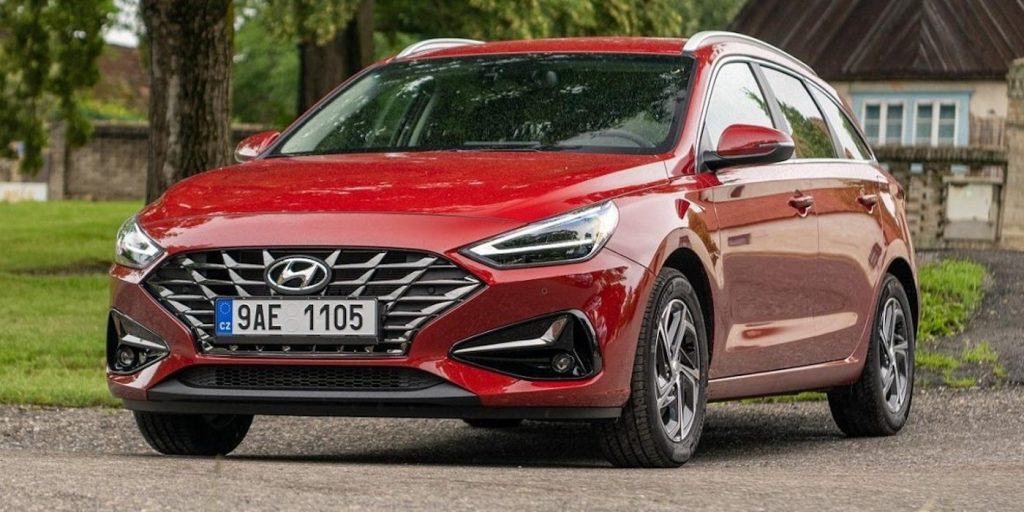
Under the hood, the Hyundai i30 Base is equipped with a 2.0-liter petrol engine producing 120 kW of power at 6200 rpm and 203 Nm of torque at 4700 rpm. This engine is mated to a six-speed manual transmission. According to Hyundai, the i30 Base consumes 7.3 liters of unleaded petrol per 100 kilometers on a combined city and highway cycle, while emitting 170 grams of CO2 per kilometer.
In terms of dimensions, the vehicle stands 1455 mm (57.3 inches) tall, stretches 4340 mm (170.9 inches) in length, and spans 1795 mm (70.7 inches) in width. It features a 2650 mm (104.3 inches) wheelbase and an unladen weight of 1251 kg (2758.0 lbs). The standard tyre setup includes 205/55 R16 91H tyres on both the front and rear.
Hyundai recommends servicing the i30 Base every 12 months or 15,000 kilometers, whichever comes first. The vehicle is backed by a 60-month, unlimited-kilometer warranty.
As for practicality, the 2023 Hyundai i30 Base offers a ground clearance of 140 mm and a towing capacity rated at 1300 kg for braked trailers and 600 kg for unbraked ones. The final gear ratio for this model is 4.333.
2023 Kia Carnival
The 2023 Kia Carnival, with its 6.5 L/100 km (36.1 MPG) lab rating, performed better in real-world conditions, achieving 6.0 L/100 km (39.2 MPG), a 7% improvement. This large MPV excels in passenger and cargo space, offering an excellent blend of practicality and efficiency for families on the go.
Kia remains a dominant force in the global people-mover segment, with unmatched expertise in designing and manufacturing MPVs.
This year, it has outsold its closest rival by a factor of ten, successfully drawing in family buyers who might have otherwise opted for an SUV. It achieves this by offering the drivability of a standard passenger car while delivering exceptional people-moving capability.
On top of that, the Carnival boasts a stylish design that rivals, and in some cases surpasses, many large SUVs. It stands as a clear example of how variety can triumph in a market segment often overlooked or dismissed.
Now in its fourth generation and set to receive a facelift next year, the 2023 Kia Carnival can cater to a range of preferences—from highly functional to ultra-luxurious.
Currently, the eight-seat Carnival range starts at $47,480 plus on-road costs for the entry-level S model powered by a V6 engine. The Si variant, which is the focus here, is priced at $52,980. Above it are the SLi, beginning at $57,780, and the top-tier Platinum, starting at $65,580.

Regardless of trim level, buyers have been able to choose between a petrol V6 or a turbo-diesel engine, with the diesel option adding $2000 to the price at each level. All variants come exclusively with front-wheel drive.
The Si model presents a compelling value proposition. It offers a substantial amount of Carnival’s core strengths without stepping into the higher price bracket of the SLi, and it doesn’t feel stripped-down or under-equipped in terms of features or presentation.
However, it’s worth noting that Australian orders for the V6 engine are currently on hold due to overwhelming overseas demand, particularly in North America. Diesel versions, however, remain available for order.
2023 Kia Sportage
The 2023 Kia Sportage, on the other hand, showed a slight increase in fuel consumption, moving from 6.3 L/100 km (37.3 MPG) in the lab to 6.6 L/100 km (35.6 MPG) in real-world testing, a 5% difference. The Kia Sportage remains a solid choice in the compact SUV category, providing a comfortable ride, ample features, and reasonable fuel economy.
The 2023 Kia Sportage sets itself apart in the competitive compact crossover segment with bold, extroverted styling. Its front fascia features uniquely shaped, alien-like headlights and a distinct grille that give the vehicle a standout look. The redesigned body is also larger than before, resulting in increased cargo capacity and a more spacious interior.
Inside, the Sportage offers a visually appealing cabin equipped with a wide range of tech features, including a large, dash-mounted screen that dominates the front layout. Under the hood, the standard powertrain is a 187-hp 2.5-liter four-cylinder engine paired with an eight-speed automatic transmission.
Front-wheel drive is standard, though all-wheel drive is available. In addition to the base engine, hybrid and plug-in hybrid versions are also offered (reviewed separately), delivering more efficiency and quicker acceleration.
For 2023, the Sportage enters a new generation and now shares its platform, drivetrain options, and technology with the Hyundai Tucson, which received a major redesign in 2022. Pricing for the 2023 Sportage starts at $27,615 and goes up to $38,415 depending on the chosen trim and features.
The lineup includes the LX, EX, X-Line, SX, SX Prestige, X-Pro, and X-Pro Prestige trims. Among these, the EX trim stands out as the best value, offering upgrades such as a larger 12.3-inch infotainment display, wireless smartphone charging, and heated front seats.
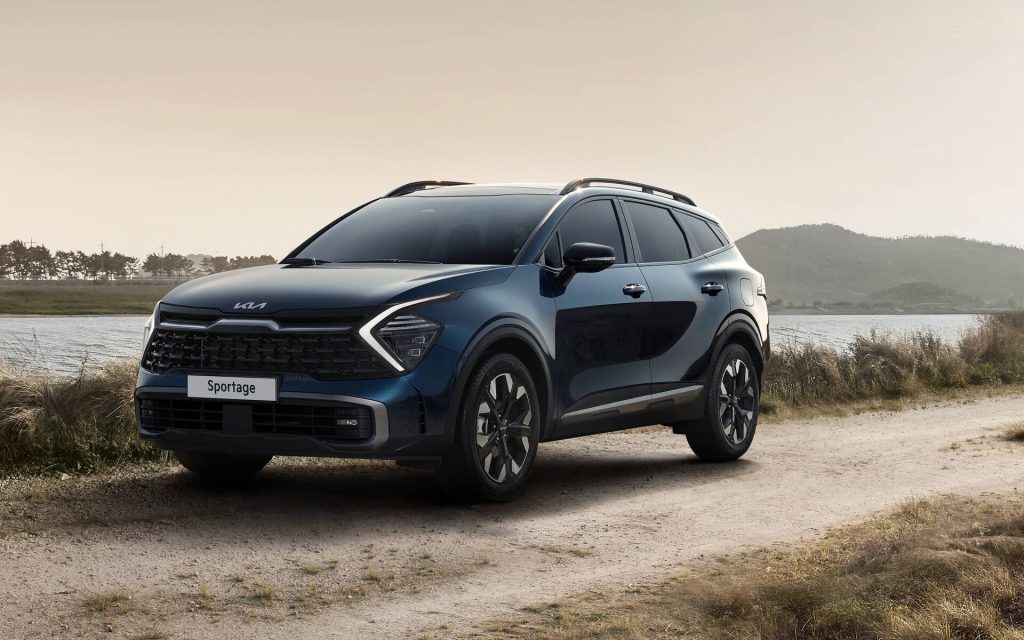
In performance testing, the standard four-cylinder engine delivered a 0–60 mph time of 8.6 seconds, while the hybrid model achieved the same in a quicker 7.4 seconds.
The Sportage rides on a new, longer-wheelbase platform that enhances comfort, making it smoother over bumps and uneven road surfaces. Although trims like the X-Line contribute to the vehicle’s rugged, off-road-inspired appearance, the X-Pro variant adds genuine off-road capabilities.
This version comes with black 17-inch wheels, all-terrain tires, and multiple drive modes to help navigate tougher terrain. Despite strong competition from established models like the Mazda CX-5 and Honda CR-V, the 2023 Kia Sportage proves it brings more to the table than just eye-catching design.
2023 MG 3
Finally, the 2023 MG 3, which performed the worst among the tested vehicles with a 19% increase in fuel consumption, showed a real-world rating of 7.9 L/100 km (29.7 MPG) compared to its lab rating of 6.7 L/100 km (35.1 MPG). Despite this discrepancy, the MG 3 offers an affordable option for those looking for a small, budget-friendly hatchback, though its fuel economy falls short of expectations.
MG’s budget-friendly supermini makes a reasonable case for itself when you factor in its compact footprint, surprisingly roomy cabin, and sub-£14,000 starting price.
However, the MG3 falls short in comparison to its rivals when it comes to overall polish, practicality, and driving dynamics. It lags behind in several key areas, and its outdated powertrain undermines its affordability by delivering poor fuel efficiency that negates its price advantage.
The MG3 has been available in the UK since 2013, receiving a mid-cycle update in 2018. A replacement is expected to arrive in early 2024, though it is unlikely to incorporate any form of electrification. That said, the next-generation model will almost certainly come with a higher price tag, moving it away from its current low-cost positioning.
At launch, the MG3’s low price pitted it against smaller city cars such as the Hyundai i10, Toyota Aygo, Citroen C1, and Peugeot 108. While many of those original competitors have since been discontinued, the MG3 still faces stiff competition in the market.
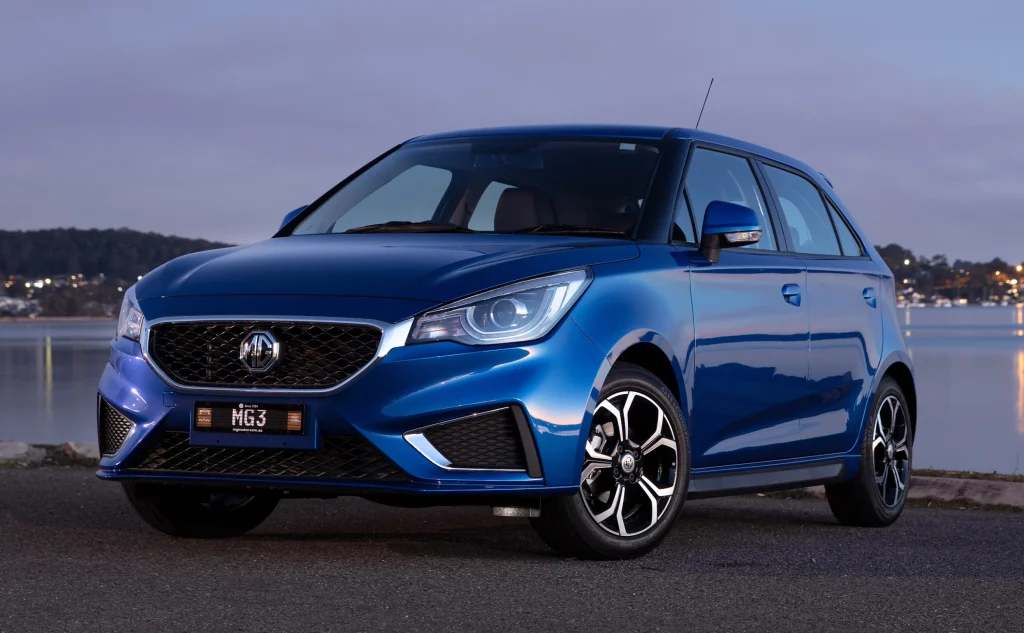
Currently, the Dacia Sandero and Citroen C3 stand as its closest rivals. Like the MG3, both are five-door superminis starting below £14,000. However, both alternatives are much newer and benefit from more modern technology and features.
If you’re willing to stretch your budget slightly, other compelling options include the Hyundai i10 (named City Car of the Year for 2023), the Toyota Aygo X, and the Kia Picanto. These models are easier to drive around town, offer significantly better fuel efficiency, and feature more contemporary styling compared to the MG3.
The MG3’s 2018 update brought some enhancements to the interior, but the mechanical underpinnings remained the same. Every MG3 is powered by a 1.5-litre VTi Tech four-cylinder petrol engine, paired with a five-speed manual gearbox and front-wheel drive.
This naturally aspirated engine produces 105bhp at 6,000rpm and 137Nm of torque at 4,750rpm. Because of its power delivery, the engine must be revved hard to extract performance, which negatively affects both fuel economy and emissions—especially when compared to rivals using smaller, turbocharged engines that are more efficient at lower RPMs.
The MG3 range is straightforward, offering just two trims: Excite and Exclusive Nav, following the discontinuation of the mid-range Exclusive trim. Standard equipment includes an eight-inch touchscreen, rear parking sensors, air conditioning, and Apple CarPlay—though it lacks Android Auto.
Opting for the Exclusive Nav version, which costs around £1,700 more, adds features such as sports seats, cruise control, a reversing camera, and a six-speaker audio system.

